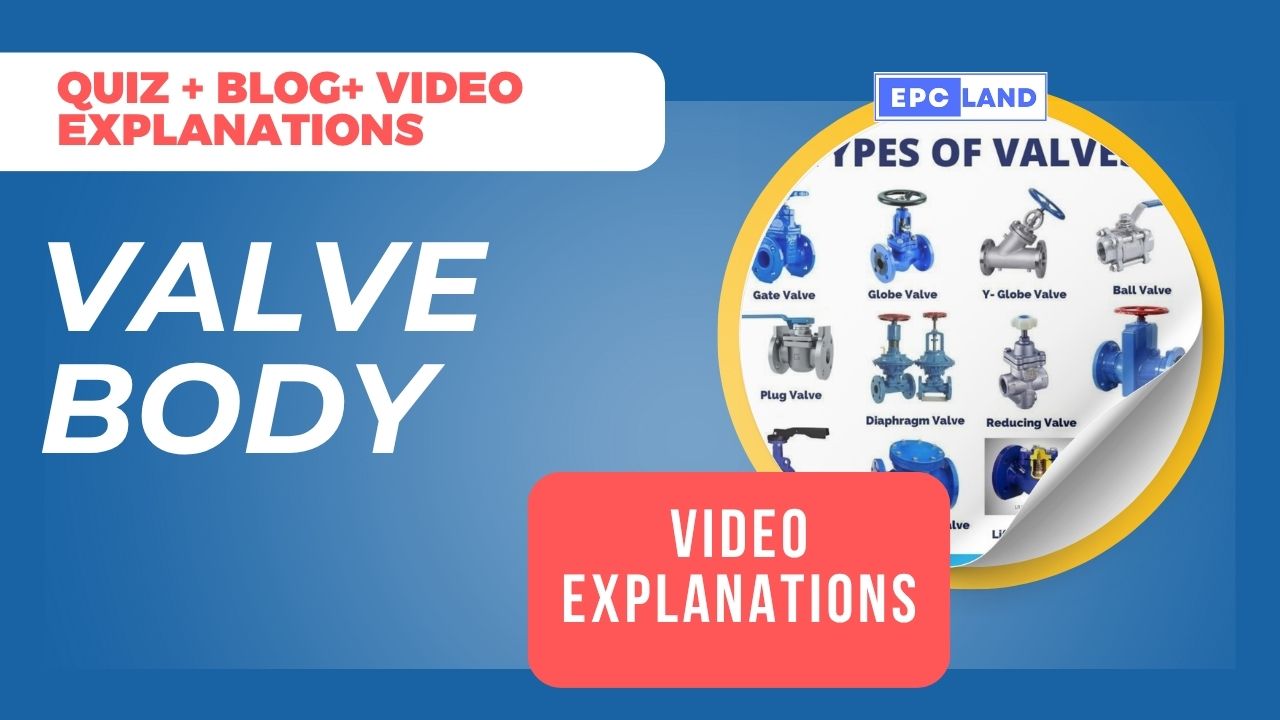Valve Body: 7 Essential Concepts for Piping Engineers
Understanding the valve body, also known as the valve shell, is fundamental in piping engineering. It is the primary pressure-retaining component of a valve and forms its core structure. The valve body houses the valve trim, which includes critical internal moving parts like the disc, plug, or seat. Furthermore, it provides the essential pathway for fluid flow through the system. Selecting the correct valve body type is crucial for optimizing flow control, ensuring system safety, and maximizing operational efficiency. This guide explores key aspects of the valve body, from manufacturing and materials to different types based on flow passage, providing essential knowledge for anyone in the field.
Table of Contents
- Introduction
- The Quiz Section: Test Your Knowledge on Valve Body
- Major Takeaways
- Conclusion
- Check all Quiz Blogs with Video Explanations
🔷 Check the complete course on Piping Engineering
The Quiz Section: Test Your Knowledge on Valve Body
Question 1: What is the primary function of the valve body in a valve assembly?
Question 2: Which component is contained within the valve body and includes parts like the disc, plug, or seat?
Question 3: Besides containing the valve trim, what other crucial function does the valve body perform regarding fluid?
Question 4: Which of the following is listed as a manufacturing technique for valve bodies?
Question 5: What factors influence the selection of materials for a valve body?
Question 6: What is the purpose of the specially designed ends on a valve body?
Question 7: Which of the following is a recognized type of end connection for a valve body?
Question 8: In which type of valve body based on flow passage is the passage through the valve smaller than the connecting pipe size?
Question 9: The full bore type valve body design is typically used for what specific pipeline maintenance activity?
Question 10: Which valve types are mentioned as commonly using the cross flow or split section body design?
📘 Explore all available courses on EPCLAND
Major Takeaways
- The valve body is the main component that retains pressure in a valve.
- It forms the valve’s framework and contains internal moving parts called the valve trim.
- The valve body provides the passage for fluid to flow.
- Different manufacturing techniques like casting, forging, and fabrication are used for the valve body.
- Materials for the valve body vary, including metals, alloys, and non-metals, based on application, pressure, and temperature.
- Choosing the right valve body type is critical for system safety and operational efficiency.
Conclusion
The valve body is far more than just a container; it is a critical component that defines a valve’s function, structural integrity, and compatibility with piping systems. Understanding the different types of valve body designs, their manufacturing, materials, and connection methods is essential for making informed decisions in valve selection and system design. Choosing the correct valve body ensures effective flow control, enhances system safety, and contributes to overall operational efficiency.
📚 Check all Quiz Blogs with Video Explanations



